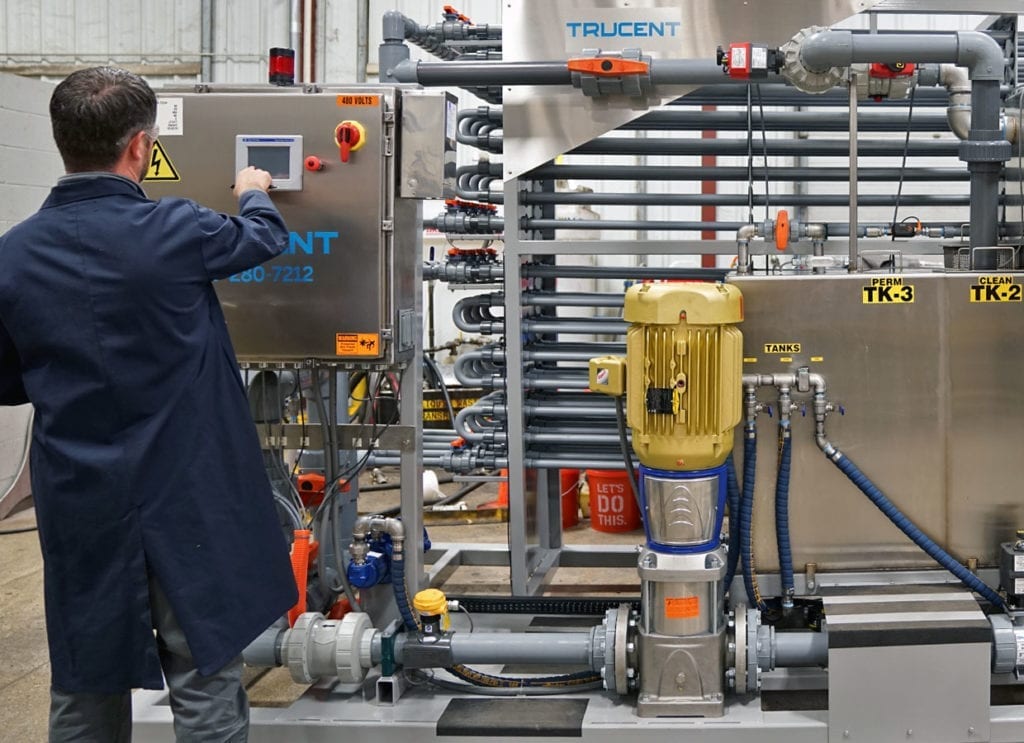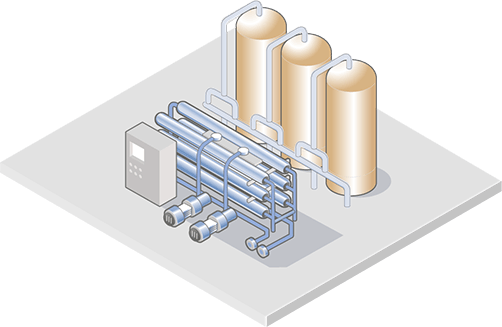Industrial Waste Water Treatment-- Cutting-Edge Technologies for Water Filtration
Industrial Waste Water Treatment-- Cutting-Edge Technologies for Water Filtration
Blog Article
Key Methods in Hazardous Waste Water Therapy Processes
The treatment of commercial wastewater is an essential facet of ecological administration, including a series of techniques created to reduce the impact of contaminants. From the fundamental physical methods that divide solids to the innovative chemical and biological processes that target specific contaminants, each technique plays a vital duty in attaining water high quality standards. Innovations in modern technologies such as membrane layer filtration and advanced oxidation procedures provide cutting-edge options for improving treatment efficiency. Comprehending how these methods interconnect and their ramifications for sustainability increases vital inquiries about the future of wastewater administration in market.
Physical Treatment Methods
Exactly how effectively can physical therapy techniques attend to the intricacies of commercial wastewater? Physical therapy techniques play a crucial duty in the initial stages of wastewater management, concentrating mostly on the removal of solids and large particulates. Strategies such as flotation protection, filtering, and sedimentation are essential for reducing the focus of suspended solids, consequently improving the performance of succeeding treatment procedures.
Sedimentation involves the gravitational settling of solids, permitting for the splitting up of much heavier products from the wastewater. This approach is particularly efficient in making clear water prior to biological or chemical therapies.
Furthermore, flotation protection approaches, which make use of air bubbles to lift put on hold solids to the surface for elimination, are effective in treating wastewater with high focus of fats, oils, and oils. Generally, physical therapy techniques work as an important very first step in the thorough monitoring of industrial wastewater, making certain that the tons on succeeding treatment phases is decreased and enhancing total therapy effectiveness.
Chemical Treatment Techniques
While physical treatment methods lay the foundation for effective wastewater monitoring, chemical therapy methods are essential for dealing with the extra complicated contaminants usually discovered in commercial effluents. These techniques utilize different chemical representatives to precipitate, neutralize, or oxidize hazardous materials, ensuring a more comprehensive removal of contaminants.
One usual approach is coagulation and flocculation, where chemical coagulants such as aluminum sulfate or ferric chloride are included in promote the aggregation of suspended bits. This process boosts solid-liquid separation, decreasing turbidity and boosting water top quality. Furthermore, neutralization procedures are employed to change the pH of wastewater, utilizing acids or bases to neutralize acidic or alkaline streams, specifically.
Oxidation-reduction responses play a vital role in degrading organic pollutants and microorganisms. Chemical oxidants like chlorine, ozone, or hydrogen peroxide are used to break down intricate natural substances, making them less harmful or extra naturally degradable. Additionally, advanced oxidation procedures (AOPs) incorporate numerous oxidation strategies to improve contaminant removal effectiveness.
Organic Therapy Procedures
The effectiveness of wastewater therapy is substantially enhanced by organic treatment procedures, which harness the all-natural metabolic tasks of bacteria to disintegrate raw material and eliminate toxins. Industrial Waste Water Treatment. These procedures mainly include anaerobic and cardiovascular digestion, each tailored for particular types of wastewater
Cardio treatment procedures make use of oxygen to support microbial development, promoting the failure of natural contaminants right into co2 and water. Typical approaches consist of turned on sludge systems, where oygenation storage tanks help with the blending of wastewater with microorganisms, and trickling filters, which encourage biofilm growth on media surfaces.
On the other hand, anaerobic treatment processes take place in the absence of oxygen, utilizing anaerobic microorganisms to disintegrate natural matter, causing biogas production, a renewable resource source. Anaerobic digesters are frequently employed in commercial settings for this purpose, properly reducing the quantity of sludge while producing valuable biogas.
The choice of a biological therapy approach depends upon wastewater characteristics, therapy goals, and governing standards. The assimilation of organic procedures in wastewater therapy not just enhances toxin elimination efficiency yet additionally promotes sustainability by lessening chemical use and supporting resource recuperation.
Advanced Oxidation Processes

Typical AOP methods consist of Fenton's photocatalysis, ozonation, and reagent. Fenton's reagent, a mix of hydrogen peroxide and ferrous iron, catalyzes the development of hydroxyl radicals, making it efficient for treating wastewater including phenolic compounds and various other recalcitrant materials. Ozonation uses ozone as an effective oxidant, efficient see page in deteriorating a variety of natural contaminants while at the same time disinfecting the effluent. Photocatalysis utilizes light-activated stimulants, such as titanium dioxide, to improve oxidation responses and eliminate contaminants.
AOPs supply several benefits, including minimized sludge manufacturing and the capacity to treat wastewater with high concentrations of organic pollutants. The execution of AOPs calls for mindful consideration of functional specifications and cost-effectiveness, making certain that these innovative strategies are appropriately incorporated right into existing wastewater therapy systems.
Membrane Layer Filtering Technologies

Microfiltration is effective for getting rid of suspended solids and germs, while ultrafiltration targets smaller natural molecules and infections. Nanofiltration links the space between ultrafiltration and turn around osmosis, properly getting rid of divalent ions and organic substances. Reverse osmosis gives the highest degree of filtration, made use of mainly for desalination and eliminating mono-valent ions.
Membrane technologies offer numerous benefits, consisting of low power intake contrasted to traditional treatment approaches, modular design for scalability, and the capacity for water recovery and reuse. Nonetheless, obstacles such as membrane layer fouling and the need for regular maintenance must be addressed to make sure system efficiency. In general, membrane layer filtration modern technologies stand for an important element of contemporary industrial wastewater treatment methods, advertising sustainability and source preservation in water management.
Final Thought
In final thought, industrial wastewater therapy uses a diverse selection of strategies, consisting of physical, chemical, biological, and advanced approaches. Each approach plays a vital role in efficiently dealing read this post here with different contaminants, improving water top quality, and advertising resource sustainability. The assimilation of these techniques fosters an extensive therapy approach, making sure that commercial effluents meet governing criteria while lessening ecological impact. Proceeded innovations in these methodologies will certainly better enhance the effectiveness and effectiveness of wastewater treatment processes in industrial settings.
The therapy of commercial wastewater is an essential facet of environmental administration, involving a range of methods created to mitigate the effect of pollutants.Just how properly can physical therapy techniques resolve the intricacies of commercial wastewater?Advanced oxidation processes (AOPs) stand for a cutting-edge approach in commercial wastewater treatment, designed to effectively degrade organic toxins that are typically immune to conventional learn this here now treatment methods (Industrial Waste Water Treatment).In verdict, commercial wastewater therapy utilizes a diverse array of techniques, consisting of physical, chemical, biological, and advanced techniques. Proceeded developments in these techniques will better improve the effectiveness and efficiency of wastewater therapy procedures in industrial setups
Report this page